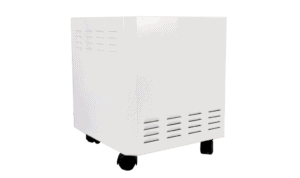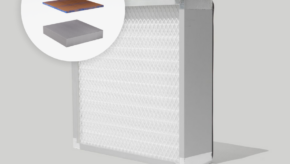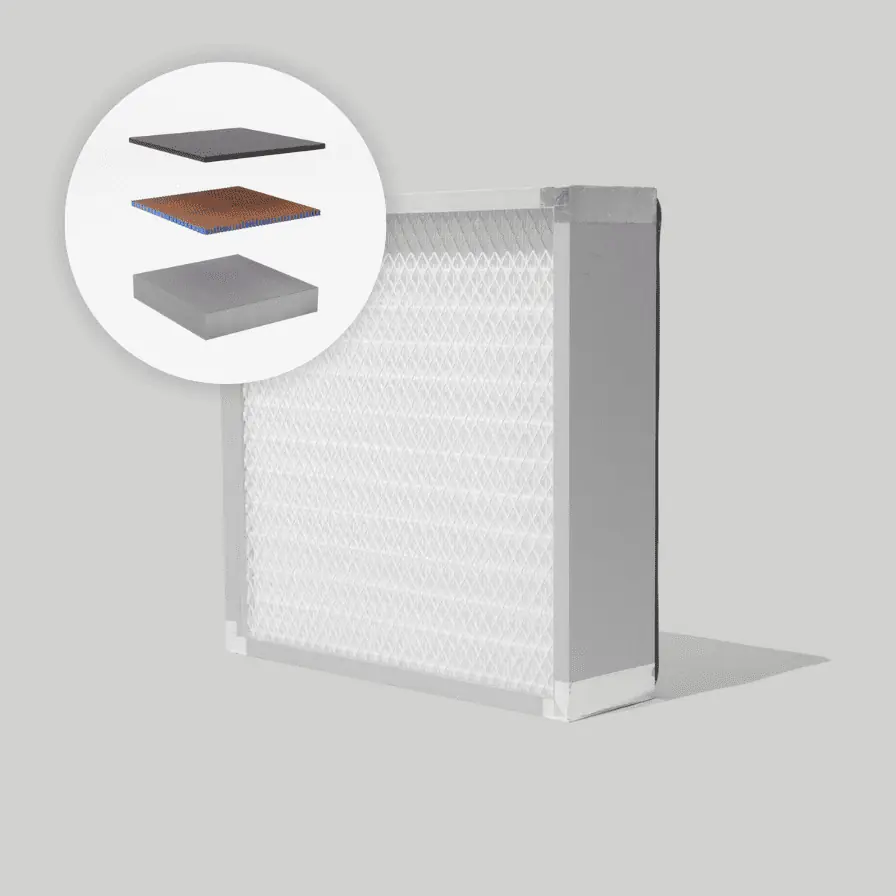Confined within your home, the air trapped in this environment will continually spread and flow throughout the space allowing for a complete accumulation to occur of airborne pollutants within your home’s air. The everyday tasks and activities that are conducted inside of a home such as cooking, cleaning, and the use of a variety of different products in this indoor space can all add to and contribute to the levels of pollutants present in the indoor air space. These higher levels of pollution in the space of your home will allow for potential health problems such as allergies, asthma, and the aggravation of an amalgam of other pre-existing health conditions. If a person starts to experience a significant altering to their overall health when they are within the indoor space of their home, it may be necessary to look for air quality solutions that can help to restore the air quality back to safe, and livable conditions.
Air purifiers vs dehumidifier are among two of the most popularly used air quality products in home’s today, as people are becoming more and more conscious about their home’s IAQ (indoor air quality), especially when it has to do with the impact it has on their health. However, which air quality device should someone use to improve their indoor air space, a dehumidifier or an air purifier?
In this article we are going to learn more about the differences between a dehumidifier vs an air purifier and discuss the benefits and cons of both of these indoor air products when it comes to the use of them inside your home.
Whats a Dehumidifier
Have you ever heard of a dehumidifier or had this air product in your home before? A dehumidifier is an electrical appliance that is known for reducing and maintaining humidity in the air of a home. Often times people will adopt this specific air device into their home for health or comfort reasons, or even to eliminate musty odors and/or the growth of mildew and mold in the environment. These devices can be used in a variety of environments such as in households, commercial facilities, and industrial applications, to help keep the moisture levels at optimal conditions in these environments.
The dehumidifier device works in the indoor environment by extracting water from the air that passes through the unit. There is a fan within the dehumidifier that will collect the air from the surrounding area and pull it into the dehumidifier. As the air passes through, it will come into contact with the dehumidifier’s cooled coils, these coils use condensation to pull moisture from the air and the collected moisture remains on the coils and drips into the dehumidifier’s reservoir. The dehumidifier reheats the air and will exhaust it back into the air space of the indoor environment.
Dehumidifier Uses
The benefits and uses of a dehumidifier are plentiful and although its claim to fame is its ability to reduce humidity levels from the environment. Dehumidifiers can be used in homes and offices, construction, and industrial processes – most of which will need help to control humidity and moisture in the air. The homes and offices have the potential to accumulate excessive moisture that may lead to the production of mildew/mold. Dehumidifiers are best used in indoor spaces that have higher levels of moisture present in the air, especially during the winter months when the air is cold and wet, which will allow for the environment to become moisture filled.
Some of the first signs that you will notice inside of your home or other indoor personal space that will elude to the need of a dehumidifier in this space will include the following;
- Water stains on the walls or ceilings
- High humidity rooms with poor ventilation or no ventilation
- Small spots on the wall (usually black) that are formed by mold spores that are growing on the walls or in the areas with the highest humidity in this environment (showers, sinks, bathtubs, laundry rooms, etc.)
- Must or mildew smells throughout the indoor space
- Buildup of condensation on the windows within the home
How Long Do Dehumidifiers Take to Work
When it comes to the speediness of a dehumidifier to begin performing and restoring an indoor environment back to optimal conditions with lower concentrations of moisture in the air, this device can start to work relatively quickly. Generally speaking, the first time you place a dehumidifier in the indoor space of a home it will start to work in about 6 to 7 hours on average, which will be the timeframe in which the 2-liter water tank will probably fill up within the dehumidifier. The time in which these dehumidifiers will take to work will depend on a number of different factors both in the dehumidifier and in the environment in which the dehumidifier was placed within to remove the moisture out of the air. If you have a larger square footage of area in your home than you will want to be sure that the dehumidifier is large enough to work effectively in this space.
However, when it comes to the mitigation and controlling of moisture in the air of a home, a dehumidifier will work to reduce the humidity within a few days to a week on average. This does not apply to environments though that have been completely flooded, as there will be a need for more industrial solutions to integrate within this space to help restore the indoor environment.
What is an Air Purifier
According to Wikipedia, an air purifier is a device that is used within an indoor environment to help remove contaminants from the air in this space, which will ultimately help to restore the indoor air quality to healthy levels in your home. These air purification cleaners are one of the most commonly used air quality products on the market that are used to help allergy sufferers and asthmatic individuals, while also helping to eliminate second-hand tobacco smoke. Usually an air purifier will consist of filter(s) and a fan to help circulate and purify the indoor air as it moves through the air purifier. These filters that are used in air purifiers are usually composed of paper, fiber (fiberglass), or mesh.
These indoor air devices specifically work to filter the indoor air of contaminants rather than help to control moisture levels in the environment like dehumidifiers and humidifiers do when used in these indoor spaces. Air purifiers will allow for a rather immediate solution to indoor air quality problems in an environment, by quickly working to push air throughout the filtration stages of the air purifier to effectively remove the particulates in the air such as dust, allergens, chemical VOCs, and other potentially hazardous airborne pollutants present in the indoor air. These devices are easily moved from room to room inside of a home, as these air purification devices are portable, with some of them on wheels to allow for an easy movement throughout the space.
Air Purifier Uses
The benefits and uses of an air purifier are plentiful and will ultimately help to contribute to a healthier environment and healthier occupants, in most cases. The job of an air purifier is to help ensure that the air that occupants are breathing in that is found inside of a home is clean, and clear of airborne pollutants. These devices can be used to mitigate and remove unpleasant odors, allergens, chemical pollutants (VOCs), smoke, and depending on the air purifier sometimes they can remove microorganisms like bacteria, viruses, and mold spores in the air of an environment.
Depending on the type of technology that is used in each specific air purifier the air purifier technology will be able to be used for specific pollutant removal. An example of air filtration includes HEPA filters that are used to remove fine particulate matter from the air, carbon air filters that are used to remove gaseous chemicals from the air, and even other patented technologies that are used to eradicate and remove certain types of pollutants from the air through the use of this air purification technology.
How Long Do Air Purifiers Take to Work
Have you ever used an air purifier inside of your home? If you have, then you may know that an air purifier can begin to work rather quickly inside of your home’s space, however, depending on the conditions in this indoor space it may take a longer duration of time to completely mitigate the entire air space. An air purifier is designed to be ran 24/7 all day long to help to continually clean the air within this environment, this is due to the ease in which pollutants can enter or re-enter the air which will need to be filtered/purified by an air purifier. One good thing about air purifiers is that they utilize very little energy usage in the home, only contributing to a small amount of your energy bill each month.
The overall duration of time that you will run your air purifier will be at the discretion of the homeowner who will decide whether or not they want the air purifier ran in the environment and at which speed they want the air purifier fan to be set at for air filtration. Another important component of an air purifier is the length of the filter’s life inside of the air purifier, and these air filters will vary depending on the type of filter that is used within the purifier. Some air filters will last for a couple weeks, a month, or several months, just depending on the conditions in the home and the filter type used.
Air Purifier vs Humidifier vs Dehumidifier
The three most well known and most commonly used air quality products in a home will include the air purifier, humidifier, and the dehumidifier. Each of these air quality products will work differently in the indoor environment, providing specific capabilities to remove or add certain components to the air space, such as moisture, pollutants, and other airborne particles. Below we are going to compare these three air quality devices and learn what each of these air products are designed to do when placed in a home.
A humidifier and a dehumidifier are two very similar air quality products that work the exact opposite from one another. A humidifier is a device that is used to increase the humidity level within an indoor air space, whereas a dehumidifier works the opposite to decrease humidity in the indoor air. These machines, although they work to either remove or add moisture to the air, they will not work to filter or remove pollutants from the air, like an air purifier does when placed in the environment.
Do Humidifiers Clean the Air?
Do humidifiers clean the air? As we discussed previously, a humidifier or dehumidifier will not work to clean the air and remove pollutants from the air space of an environment. An air purifier is an air quality device that is specifically designed and used to filter the indoor air and remove pollutants from it efficiently. There are a variety of different types of air purifiers that Consumers use today including carbon air purifiers, ionic air purifiers, ozone generators, and HEPA air purifiers. However, when it comes to cleaning a large variety of pollutants out of the indoor air the EnviroKlenz Air Purifier proprietary technology will be the revolutionary air filtration device for home’s and other indoor environments.

The EnviroKlenz Air Purifier is a revolutionary air filtration technology that is composed of earth minerals that work to capture, contain, and neutralize a variety of airborne pollutants from the air such as chemicals (VOCs), noxious odors, and particulate matter. The EnviroKlenz Air Purifier uses a two-stage filtration process, the first stage of filtration is the EnviroKlenz proprietary technology for noxious and toxic chemical and odor neutralization, while the second stage is a hospital-grade HEPA filter for fine particulate matter removal as large as 0.3 microns in size.
Article Sources:








